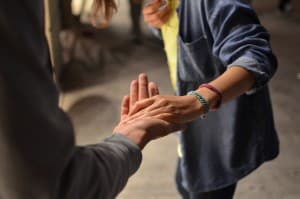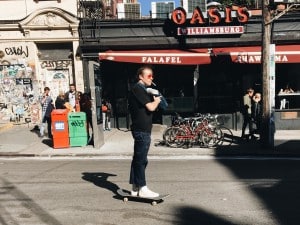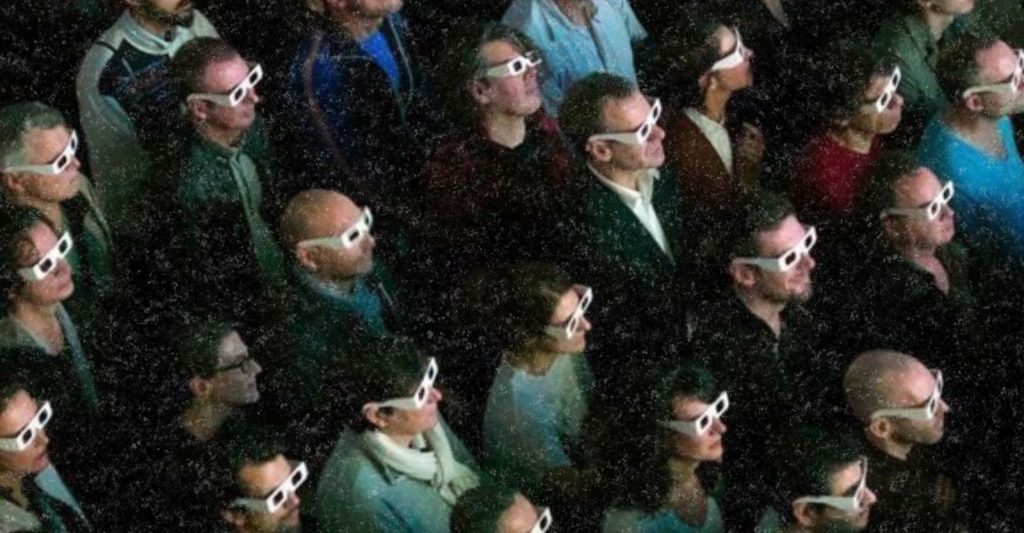MINDFUL GENTRIFICATION
Do you remember the cartoon series “Schoolhouse Rock”? A fan favorite in my childhood was “The American Melting Pot”. The song addresses our country’s open-armed foundation to immigration. We are encouraged to “jump right in” and embrace that we are all ingredients to the recipe of America. Fast-forward to present day. In our city, rent is skyrocketing and space is scarce. All of a sudden it seems as if the housing market in the city is akin to “Hunger Games” and there are lines being drawn in the sand. The general feeling or emotion that comes from the complexity of our city’s predicament can be summed up in one word: gentrification. So how do we mindfully gentrify? Read on.
Less Gentrification, More Community
When we hear the word gentrification our minds usually move to a space of negativity, embarrassment, anger or confusion. (Especially if it is being used in the noun form; gentrifier!) The definition nods to the process of rebuilding “deteriorating” areas to accompany an influx of people who are usually wealthier than the current residents. The ultimate result is a displacement to make space for people to make a “fresh start” and with that a fresh profit. Displacement is more than people having to move out of their homes (which is often the case with many). There is also a displacement of culture, tone, and general community. Instead of being a melting pot of unique cultures and integrate them into an already existing system, gentrification brings with it a wave of affluence that often has no space for what was or is.
“Good” Gentrification
Take a ride on any train in Brooklyn and you will see an example of this term in action. Trains that were mainly filled with people of color and working-class families are now being infiltrated by millennials who often come from more affluent backgrounds and different cultures. But what’s wrong with this? Isn’t one of the foundations of this country the right to have the freedom to thrive and build where you choose? In short, yes. We can’t claim to be a city that accepts the masses and then shuns people from moving to new places, especially in the current housing market. It’s more about understanding the implication and impact.
Like many things gentrification is grey. But like it or not, gentrification is something that we will forever be subject to, especially in our city. The question then is how do we confront it and bring a little more humanity to this systematic turnover that is persistent in our lives. Although it might sound like an oxymoron for some there are ways in which we can mindfully incorporate ourselves into a community that existed before our arrival.
Say Hello
We are adults so it’s time we put aside the don’t talk to strangers warning our parents often imparted to us. Many communities affected by gentrification are being stripped of their culture’s colloquialisms. The most basic being an acknowledgment of another. Smiles, nods, and a general “hello” is a foundation way to begin to integrate yourself into a community. In a recent conversation with a friend and self-labeled “gentrifier” of Bushwick, Christina, we began to discuss the change the community has experienced over the past five years. “I’ve lived here for almost a decade, I guess you could say I was one of the first gentrifiers. The neighborhood still had its ‘feel’ then. There was like one restaurant, one yoga studio, one “health food store” lovingly termed ‘hipstermart’ by my friends and I and one coffee shop. I began to become friends with my neighbors simply by saying hello.”
This self-identified ‘hipster’ went on to talk about the friendships she formed with her 90-year-old neighbor, Paulina, who hailed here decades ago from Russia to play the piano for the ballet and her 40 something neighbor, Cliff, who grew up in the projects of Brownsville and now loving watched over the block with his sweet pit bulls Simba and Nala. “When there was more and more development of the neighborhood,” says Christina. I started to notice the community feeling begin to fade. The new people weren’t saying hello or recognizing the culture. I began to find myself become aggravated with each new face I saw. Although I was also a gentrifier, I made attempts to become apart of the community. Now that I had I began to also experience the ‘slightness’ from those who were moving in and acting like the place was theirs with no recognition or desire to connect with us.”
Understand the History and Context of your New Community
My friend Dante told me about an experience he had sitting on his Mama’s stoop. “My Mom lives in the basement of a Brownstone that her father bought decades ago; a proud accomplishment for a black man in the 1940’s. I just graduated with my Master’s degree from Colombia so I knew I would be able to continue to keep her here even after the change. My Mom rents out the top apartment of the home for additional income. With the change in the neighborhood, the residents that rent are usually young and white; the circumstance wasn’t different here. A couple walked out and I turned, smiled and said hello. I thought it would be reciprocated but to my surprise, it wasn’t. Instead, I was met by a turning of the back and locking of the door. They were locking me out of my own house and I thought are you f-ing kidding me!?! I said hello again thinking maybe they didn’t hear me, although I know they did, and literally they continued to lock the door and hurried past me as if I didn’t exist.”
Now, was this the intent of the people, who knows. Maybe they were in a hurry or maybe they really didn’t hear him, maybe they were just aloof but the exchange that happened in this situation was debilitating. When asking my friend what they could have done to improve the situation the answer was easy; “acknowledge me, ask how my day was, ask if I was waiting for someone, anything. I am a human being too”
So What, Now What?
So what do we do with all this information? We all need a place to call home and closing off opportunities for people to revitalize and rejuvenate neighborhoods doesn’t sit well. Creating an embrace towards change can begin with some small moves in the right direction.
Keep reading for some suggestions.
Shop Local
We all know the influence of the mighty dollar and its connection to the evolution of a community. (Hence the foundation of gentrification.) Check out the local bodega or laundry mat. Need a cobbler or seamstress- there is likely one in your hood, try them out for a change. You don’t have to completely abandon your favorite staples spots but there’s no harm in spreading some of the wealth locally. In fact, it’s helpful! Contributing to your local economy will likely be a much-needed support for family businesses to enjoy the result of a revitalized neighborhood.
Comm-UNITY
We’re entering the “outside season” of New York. What steps will you take to further become support unity where you live? Simply start with a smile and hello. Notice the unique beauty of your hood. Vow to learn about a new place or make a new friend. While we will inevitably continue to see more gentrification we can reclaim the term gentrification. Let’s acknowledge the societal implications of neighborhood evolution and actively work to preserve the beauty our hoods already hold.
How do we make the best out of rapid gentrification in New York City?
Do you have experiences moving into a new neighborhood and want to share your insight? Let us know in the comments!
Check out our Say Hello dad cap in our shop!
http://credit-n.ru/zaymyi-next.html
http://credit-n.ru/zaymyi-next.html
http://credit-n.ru/zaymyi-next.html
http://credit-n.ru/zaymyi-next.html







